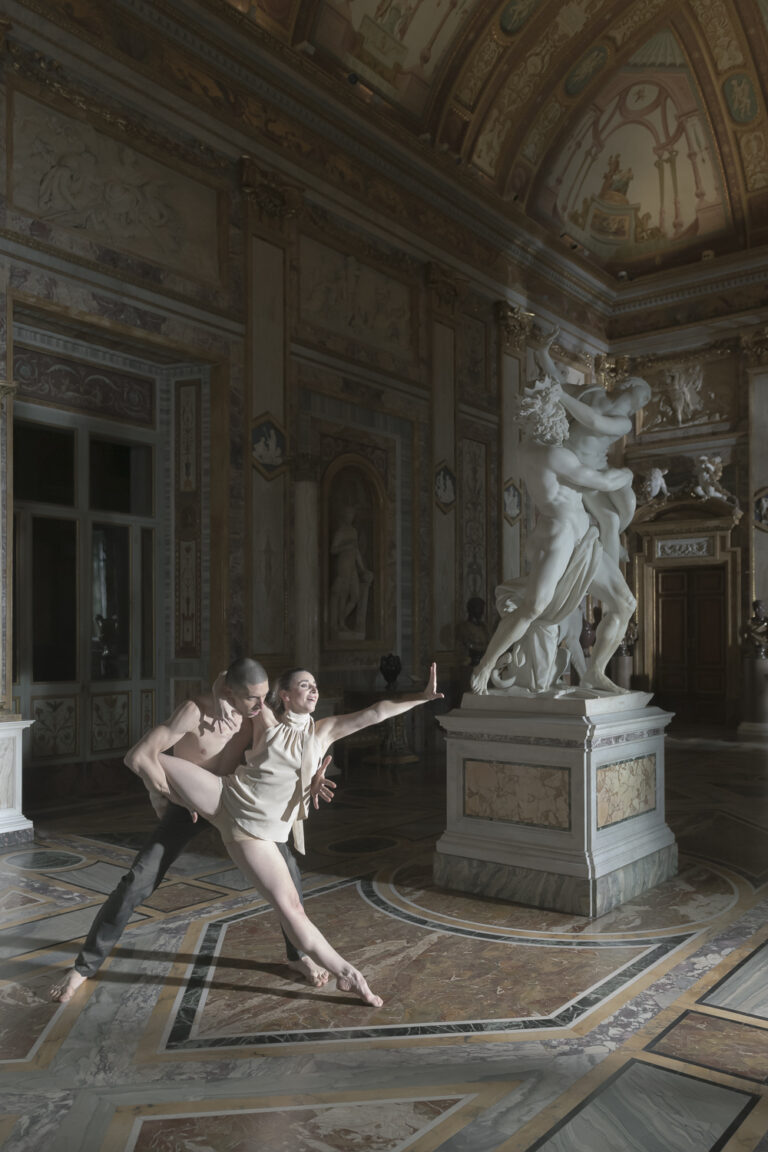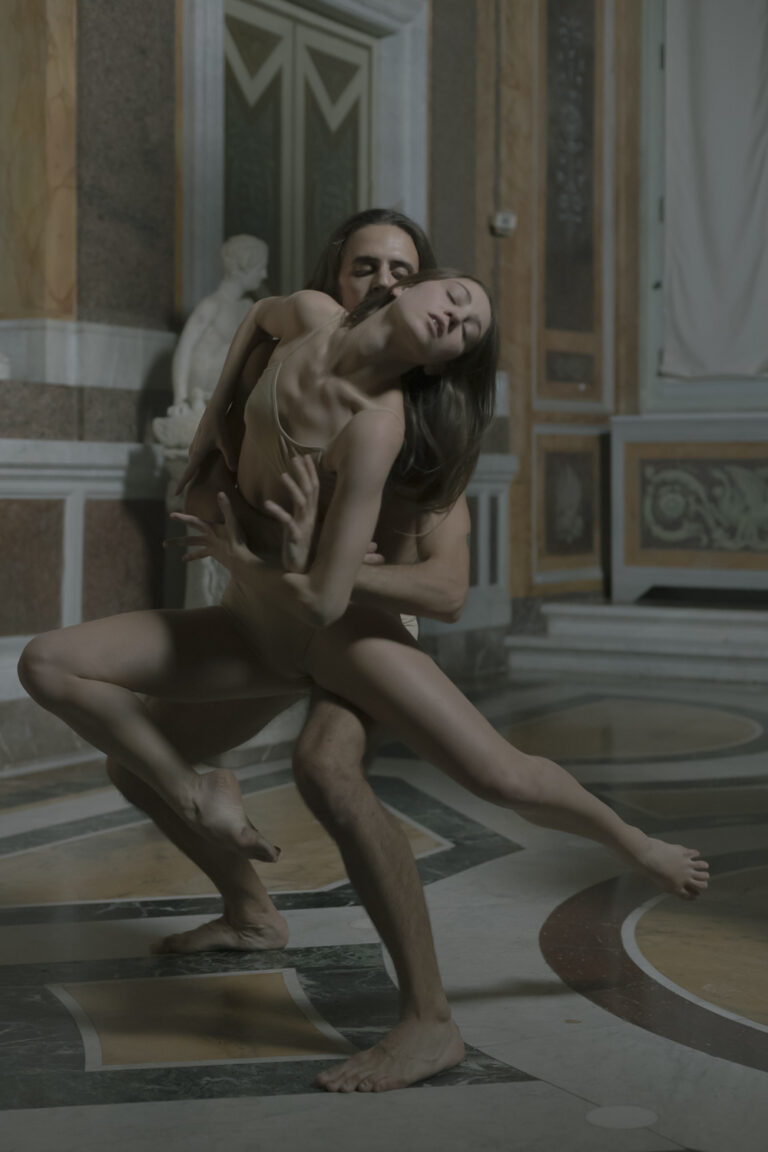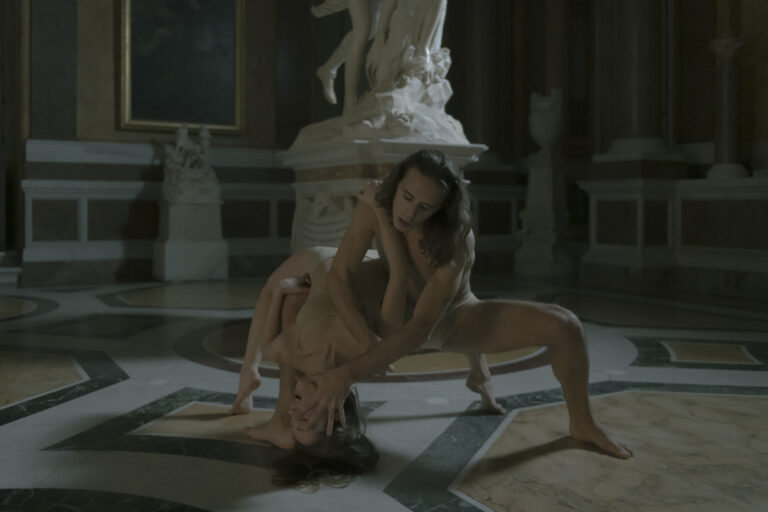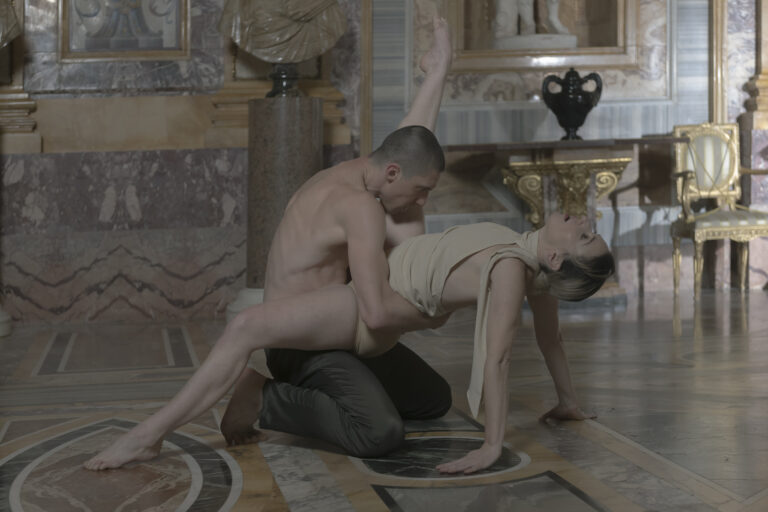Conceived and directed by Cristiano Leone, RADIX is an audiovisual project that promotes a dialogue between contemporary creation, historical heritage, and language as a vehicle for cultural diplomacy.
The first chapter of the series is dedicated to Spain. Promoted by the Cultural Office of the Spanish Embassy in Rome, with the collaboration of the Royal Academy of Spain and the Instituto Cervantes, the Spanish dancer and choreographer Iván Pérez was invited to interact with the words of the philosopher Seneca and the setting of Bramante’s Tempietto.
The Tempietto, a unique example in the history of cultural diplomacy between Spain and Italy, was commissioned by the Catholic Monarchs at the beginning of the 16th century and rises on the exact point where, according to a medieval tradition, the martyrdom of Saint Peter took place.
Like the architecture of the Tempietto, Iván Pérez’s choreography is built on the concept of circularity. Through an ascending spiral movement the choreographer turns time into an ever-expanding vector of motion that brings the inert columns back to life and suggests a relationship of continuity between antiquity, the Renaissance and contemporary Rome.
Pérez’s performance is accompanied by the reading in Latin of extracts from Seneca’s De Brevitate Vitae. The choice of Seneca is deeply symbolic: one of the most influential philosophers of antiquity, he was a contemporary of Saint Peter and his origins can be traced to Córdoba in Spain.
Iván Pérez’s choreography establishes a dynamic dialogue with other illustrious ancestors, from Socrates to Theophrastus and from Zeno to Aristotle. Through this dialogue, his personal history extends to infinity and opens to a plurality of eras, as suggested by the Spanish philosopher.
The aesthetics of the short film pays homage to the Liberation of Saint Peter by Bramante’s friend Rafael, emphasizing the idea of a feast of illustrious spirits to which we are all invited.
RADIX foresees extending the project to other contemporary artists to explore our roots, seek inspiration from our historical heritage and make our cultural genealogy the touchstone of the debate about our European identity.
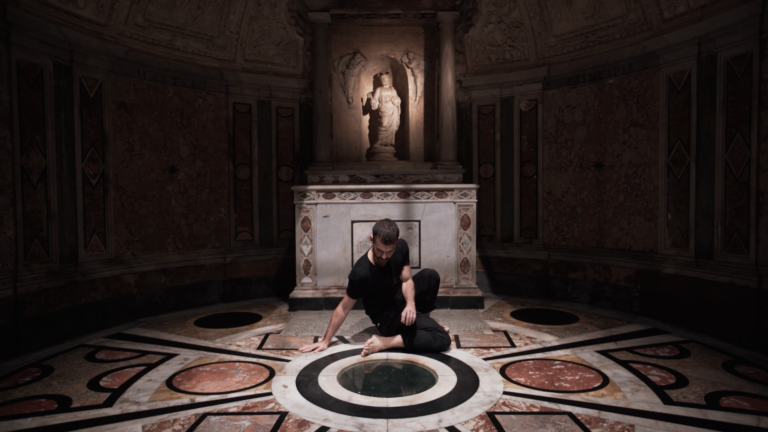
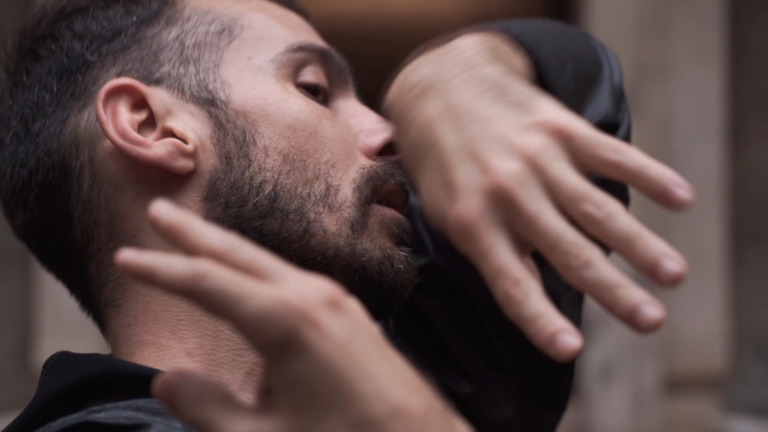
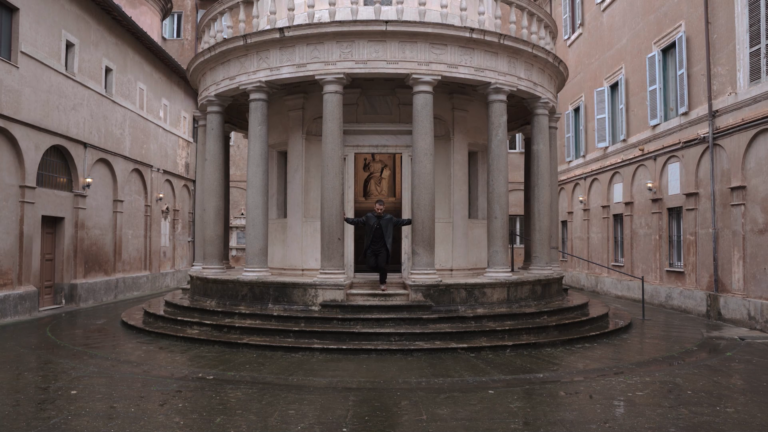
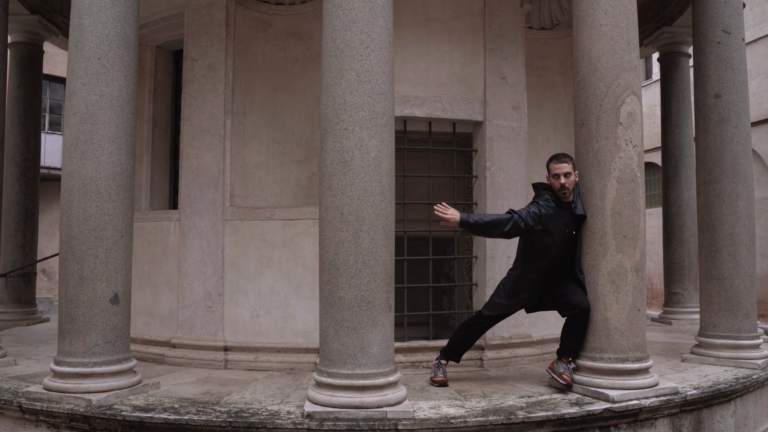
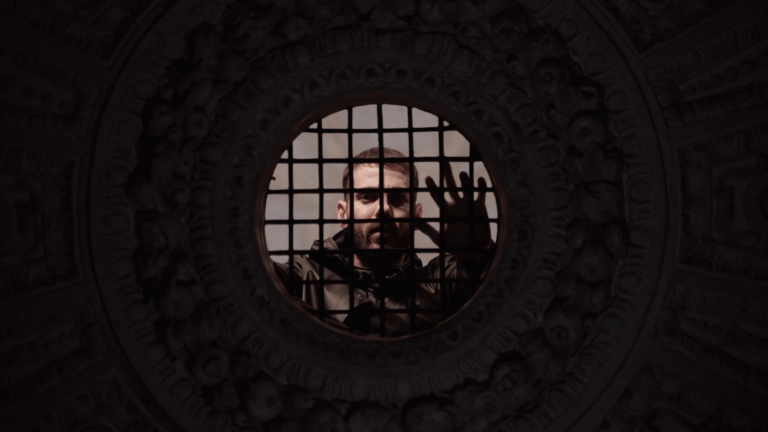

RADIX 2 stars the Basque choreographer and dancer Iratxe Ansa and the Italian dancer Igor Bacovich. The project is promoted by the Cultural Office of the Spanish Embassy in Rome, with the collaboration of the Special Superintendence of Rome, the Royal Academy of Spain in Rome, the Instituto Cervantes in Rome, in Media Partnership with Rai Cultura. It was shot in the totality of the external spaces of the Baths of Caracalla.
Through this artistic video, Iratxe Ansa and Igor Bacovich pay homage to the monument’s history and the cultural heritage of two anti-fascist intellectuals, the Spanish poet of Italian origins Rafael Alberti and his wife, the writer Maria Teresa León. Having fled Franco’s Spain, the Alberti’s arrived in Rome following a long period in exile.
During their time in Rome, Rafael Alberti wrote the poetic anthology Roma, peligro para caminantes, while Maria Teresa León wrote her vibrant autobiography, Memoria de la Melancolía.
During the performance, the dancers (couple in life and art, just like Alberti and León) recite some verses extracted from these two works, evoking both the severe pain of a life in exile and the hope for a new beginning in the city that had just welcomed them: Rome in the 1960s. Both città Eterna (Eternal city) and città sparita (Vanished city), Rome in the 1960s is the fierce city depicted by Fellini, in which the excessive baroque architecture coexists with ruins covered with inscriptions of love and politics.
The soundtrack was conceived for the occasion by the Spanish composer Marc Álvarez, who pays tribute to the orchestral compositions of Ennio Morricone and Nino Rota, restoring a lifeline that connects ancient Rome to the tempo of the 1960s.
In RADIX 2, the Baths of Caracalla are as protagonists as the dancers, whose bodies blend with the spaces of the ancient Palestre, the Caldarium and the Frigidarium, spreading like shadows over the roman mosaics and reinhabiting the openings that once hosted majestic statues.
The words of Rafael Alberti and Maria Teresa León, evoked by the dancers within this setting, acquire a powerful symbolism. The Baths were built by the emperor Antonino Caracalla who in 212 AD issued the Constitutio Antoniana, an edict that granted Roman citizenship to all the inhabitants of the empire.
Following RADIX I and RADIX II – shot at Rome’s Tempietto del Bramante and the Baths of Caracalla, respectively – RADIX III concludes the triptych in the spectacular Galleria Borghese.
In the course of taking in that collection’s splendors, our protagonists, choreographers and dancers, Iratxe Ansa and Igor Bacovich, discover Italian Baroque sculptor Gian Lorenzo Bernini’s thrilling masterpieces: Apollo and Daphne and The Rape of Proserpina. Thus begins their odyssey through the ages, with the sculptures coming to life and the dancers themselves embodying those mythic figures.
Yet paradoxically, at the heart of those sublime works of art lie two disturbing tales of violence.
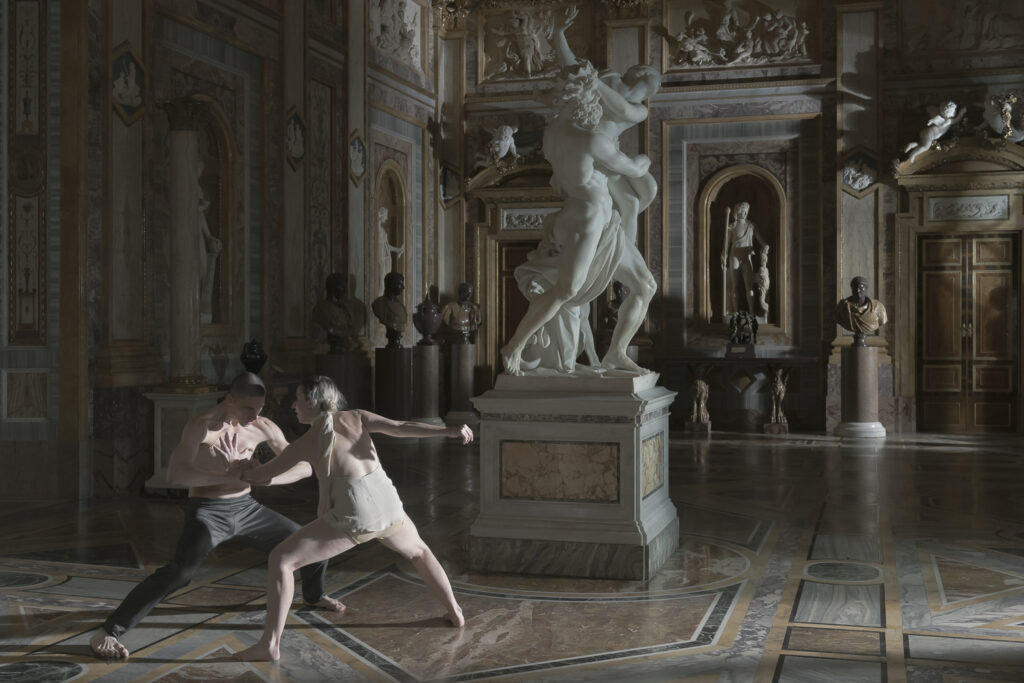
RADIX III brings forward the eternal themes in Bernini’s work, inspired by Ovid’s Metamorphoses – abuse of power, the boundary between consent and refusal, the entanglement of desire, domestic violence, rape and kidnapping – as well as in other artistic representations over the centuries.
RADIX III makes no attempt to define moralizing answers to the issues it raises. Rather, it enlivens timeless mythology through renewed critical scrutiny and imaginative interpretation, which, far from censoring or offering rationalizations, inspire the viewer to reflect personally and deeply.
Present-day artistic creations transform ancient bodies and voices in a flowing dialectic of gestures, sounds, sculpture and architecture. The drama and dynamism of Iratxe Ansa and Igor Bacovich’s choreography blend with Matteo Franceschini’s hypnotic and pulsating Classical and Baroque voices, strings, and harpsichord, interwoven with ultra-contemporary transmutations and timbres of modular synthesizers.
